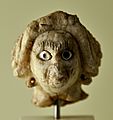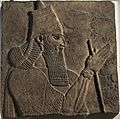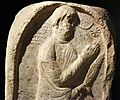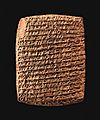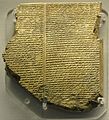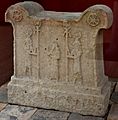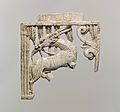Assyria facts for kids
Quick facts for kids
Assyria
|
|||||||||||
|---|---|---|---|---|---|---|---|---|---|---|---|
| 2500 BC–609 BC | |||||||||||
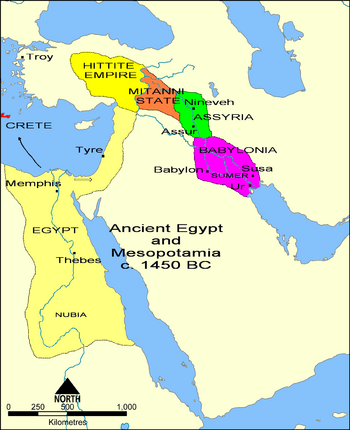
|
|||||||||||
| Capital | Aššur (2500–1754 BC) Shubat-Enlil (1754–1681 BC) Aššur (1681–879 BC) Kalhu (879–706 BC) Dur-Sharrukin (706–705 BC) Nineveh (705–612 BC) Harran (612–609 BC) |
||||||||||
| Official languages | |||||||||||
| Common languages | Akkadian Aramaic |
||||||||||
| Religion | Ancient Mesopotamian religion | ||||||||||
| Government | Monarchy | ||||||||||
| King | |||||||||||
|
• c. 2500 BC
|
Tudiya (first) | ||||||||||
|
• 612–609 BC
|
Ashur-uballit II (last) | ||||||||||
| Historical era | Bronze Age | ||||||||||
|
• Kikkiya overthrown
|
2500 BC | ||||||||||
|
• Decline of Assyria
|
612 BC 609 BC | ||||||||||
| Area | |||||||||||
| 194,249 km2 (75,000 sq mi) | |||||||||||
| Currency | Mina | ||||||||||
|
|||||||||||
Assyria, also called the Assyrian Empire, was a Mesopotamian kingdom and empire of the ancient Near East in the area today known as the Levant that existed as a state from perhaps as early as the 25th century BC (in the form of the Assur city-state) until its collapse between 612 BC and 609 BC — spanning the periods of the Early to Middle Bronze Age through to the late Iron Age.
This vast span of time is divided into the Early Period (2500–2025 BC), Old Assyrian Empire (2025–1378 BC), Middle Assyrian Empire (1392–934 BC) and Neo-Assyrian Empire (911–609 BC).
Assyria was centred on the Tigris in Upper Mesopotamia, in modern terms, northern Iraq, northeast Syria, and southeast Turkey.
The Assyrians came to rule powerful empires in several periods. Making up a substantial part of the greater Mesopotamian "cradle of civilization", which included Sumer, the Akkadian Empire, and Babylonia, Assyria reached the height of technological, scientific and cultural achievements for its time.
Starting around 900 BC, the Assyrians began campaigning to expand their empire and to dominate other people. They conquered, exacted tribute, building new fortified towns, palaces and tempels.
The Assyrians created an empire that stretched from eastern Libya and Cyprus in the East Mediterranean to Iran, and from present-day Armenia and Azerbaijan in the Transcaucasia to the Arabian Peninsula and Egypt in the south.
The name "Assyria" originates with the Assyrian state's original capital, the ancient city of Aššur, which dates to c. 2600 BC — originally one of a number of Akkadian-speaking city-states in Mesopotamia.
Assyrian people
Assyrians are an ethnic group whose descendents remain in what is today Iraq, Iran, Turkey and Syria, but who have gone to the Caucasus, North America and Western Europe during the past century. Hundreds of thousands more live in Assyrian diaspora and Iraqi refugee communities in Europe, the former Soviet Union, the United States, Australia, New Zealand, Syria, Jordan, and Lebanon.
Related pages
Images for kids
-
Head of a female figure, dating to the Akkadian period (c. 2334–2154 BC), found at Assur, on display at the Pergamon Museum in Berlin.
-
Ruins of the Old Assyrian trading colony at Kültepe
-
Partial relief of Tiglath-Pileser III (r.745–727 BC), under whom the Neo-Assyrian Empire was consolidated, centralized and significantly expanded
-
Detail of a stele in the style of the Neo-Assyrian royal steles erected in Assur in the 2nd century AD (under Parthian rule) by the local ruler Rʻuth-Assor
-
Relief depicting Naqi'a, mother of Esarhaddon (r.681–669 BC) and one of the most influential women in Assyrian history
-
7th-century BC relief depicting Ashurbanipal (r.669–631 BC) and two royal attendants
-
9th-century AD piece of papyrus with Syriac language writing
-
19th-century reconstruction of Nineveh (Assyrian capital 705–612 BC)
-
Tablet from the Library of Ashurbanipal containing a portion of the Epic of Gilgamesh
-
Temple altar of Tukulti-Ninurta I, 13th century BC
-
Statue of Shalmaneser III, 9th century BC
See also
 In Spanish: Asiria para niños
In Spanish: Asiria para niños


